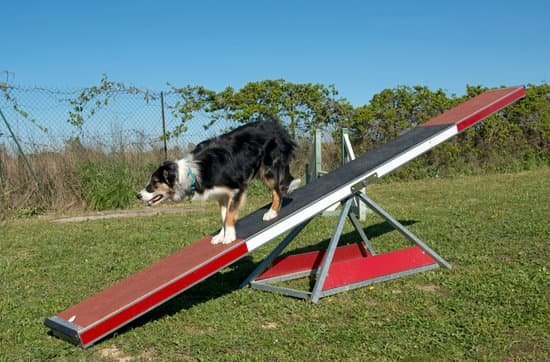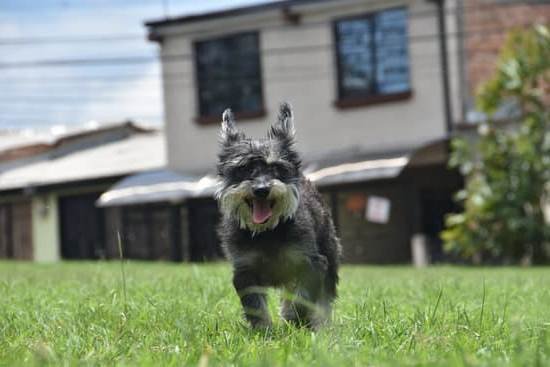Are you wondering how to put on a dog training collar? Dog training collars can be an effective tool in helping to train your furry friend, but it’s important to understand their purpose and how to properly use them. From the different types of collars available to safety precautions and common mistakes, this article will provide you with all the information you need to effectively train your dog using a training collar.
A dog training collar, also known as a e-collar or remote collar, is a tool used in dog training to help modify a dog’s behavior. It works by providing a signal or stimulation to the dog when they exhibit undesirable behavior or fail to follow commands. Understanding the purpose behind using a training collar is essential in ensuring that it is used correctly and responsibly.
Before diving into the step-by-step process of putting on and using a dog training collar, it’s important to familiarize yourself with the different types available. From martingale collars to shock collars, each type serves its own purpose and has its own set of advantages and disadvantages. Additionally, choosing the right size and fit for your dog is crucial in ensuring both comfort and effectiveness during training sessions.
Different Types of Dog Training Collars
When it comes to training your dog, choosing the right training collar is essential for achieving effective results. There are various types of dog training collars available in the market, each designed for specific training purposes. Here are the different types of dog training collars:
1. Martingale Collar: This type of collar is designed to prevent dogs from slipping out of their collar while walking on a leash. It tightens when the dog pulls, but it does not have a choking effect like traditional choke collars.
2. Prong Collar: Also known as pinch collars, prong collars have blunt prongs that poke into the dog’s neck when they pull on the leash. They are not recommended for amateur trainers as they can cause discomfort and even injury if not used properly.
3. E-Collar or Shock Collar: These collars deliver a mild electric shock to the dog as a form of correction. They can be effective when used correctly, but they should always be used under the guidance of a professional trainer to avoid causing harm to the dog.
4. Head Halter: This type of collar goes around your dog’s muzzle and behind their ears, giving you more control over their head movement during walks or training sessions.
Understanding the purpose and function of each type of training collar is crucial in determining which one would best suit your dog’s needs and temperament. When using any type of training collar, it is important to prioritize your dog’s comfort and safety above all else.
Choosing the Right Size and Fit
When it comes to choosing the right size and fit for a dog training collar, it is important to prioritize both comfort and effectiveness. A properly fitted collar will ensure that your dog can move freely without any discomfort, while also allowing the collar to function as intended during training sessions. There are a few key considerations when it comes to ensuring the proper size and fit for a dog training collar.
Measuring Your Dog
Before selecting a dog training collar, it is crucial to measure your dog’s neck accurately. Use a flexible measuring tape to measure around the base of your dog’s neck, where the collar will sit. Make sure to keep the tape snug against your dog’s skin without pulling too tightly. Record the measurement and use this as a reference when choosing the correct collar size.
Choosing the Right Size
Once you have measured your dog’s neck, refer to the sizing guide provided by the manufacturer of the training collar. Different brands may have slightly different sizing measurements, so it is essential to follow their specific guidelines when selecting a size. Avoid choosing a collar that is too tight or too loose; instead, aim for a fit that allows you to comfortably slide two fingers between the collar and your dog’s neck.
Fitting Considerations
When fitting the collar on your dog, ensure that it sits high on their neck, just below their ears. This positioning allows for better control during training exercises and ensures that any corrections are communicated effectively. Additionally, regularly check and adjust the fit of the collar as needed, especially as your dog grows or changes in weight. Proper sizing and fitting of a dog training collar are essential for ensuring both comfort and effectiveness during training sessions.
Step-by-Step Guide
Choosing the Right Type of Collar
Before putting on a dog training collar, it’s important to choose the right type for your dog. There are different types of collars available, such as martingale collars, choke chains, prong collars, and shock collars. Each type serves a different purpose and has its own set of advantages and disadvantages. It’s crucial to research and understand the specific needs of your dog before making a decision.
Proper Placement of the Collar
Once you have chosen the right type of collar for your dog, it is essential to know how to put it on correctly. Begin by placing the collar around your dog’s neck, ensuring that it is not too tight or too loose. You should be able to fit two fingers comfortably between the collar and your dog’s neck. The D-ring should sit at the top of the dog’s neck and clip closed securely.
Testing the Fit
After putting on the collar, it’s important to test the fit to ensure that it is comfortable and secure. Gently pull on the collar to check if there is enough slack for your fingers to fit between the collar and your dog’s neck. If there is too much room, you may need to adjust accordingly.
Additionally, observe your dog’s behavior while wearing the collar to ensure that it does not cause discomfort or irritation. Proper fit and placement are crucial for effective training without causing harm to your furry friend.
Adjusting the Collar for Proper Fit
When it comes to using a dog training collar, one of the most important factors to consider is ensuring that it fits your dog properly. A poorly fitted collar can cause discomfort, choking, or even lead to ineffective training. Here are some steps on how to adjust the collar for a proper fit:
1. Measure your dog’s neck: Use a flexible tape measure to measure the circumference of your dog’s neck. Make sure to add a few extra inches for comfort and adjustability.
2. Choose the right size: Based on your measurements, select a training collar that is suitable for your dog’s neck size. Different types of collars, such as prong or choke collars, may have specific sizing guidelines, so be sure to follow the manufacturer’s instructions.
3. Proper placement: Once you have selected the right size, ensure that the collar sits high on your dog’s neck, just below the jawline and behind the ears. This positioning will provide better control and prevent choking.
4. Check for fit: You should be able to fit two fingers comfortably between the collar and your dog’s neck. If there is too much slack or if it’s too tight, make adjustments accordingly.
5. Regular checks: It’s important to periodically check and readjust the collar as needed, especially as your dog grows or changes weight.
Properly adjusting a training collar is crucial for both your dog’s comfort and effective training. By following these steps, you can avoid any potential issues such as choking or discomfort while providing a safe and controlled training experience for your furry friend.
Understanding Proper Use
When it comes to using a dog training collar, it’s important to understand the proper use and techniques for effective training and communication with your pet. Using a training collar can be a helpful tool in teaching your dog obedience and good behavior, but it must be used correctly to avoid causing any harm or discomfort to your furry friend.
One tip for effective training with a dog collar is to always start with positive reinforcement. This means rewarding your dog for good behavior rather than just focusing on correcting bad behavior. By using the collar in conjunction with positive reinforcement, you can create a strong association between the correction and the unwanted behavior, leading to better results in training.
Another important aspect of proper use is to be consistent in your training methods. This means using the collar in the same way each time and ensuring that all family members or anyone else involved in the dog’s care are on the same page when it comes to training techniques. Inconsistent use of the training collar can lead to confusion for your dog and ineffective results.
A crucial factor in using a training collar effectively is understanding your dog’s specific needs and behaviors. Different dogs may respond differently to various training methods, so it’s important to tailor your approach based on your individual pet. Taking the time to observe and understand how your dog responds to the collar can help you adjust your techniques for maximum effectiveness.
| Tips | Benefits |
|---|---|
| Start with positive reinforcement | Creates strong association between correction and unwanted behavior |
| Be consistent in training methods | Avoids confusion for the dog and ineffective results |
| Understand individual dog’s needs & behaviors | Tailor approach for maximum effectiveness |
Safety Precautions
When using a dog training collar, it’s important to prioritize safety and comfort for your furry friend. Incorrect use of the collar can lead to injury or discomfort, so it’s crucial to take the necessary precautions. Here are some tips to ensure the safety and well-being of your dog when using a training collar.
First and foremost, always consult with a professional trainer or veterinarian before using a training collar on your dog. They can provide guidance on whether a training collar is suitable for your dog’s specific needs and behavior. Additionally, they can offer valuable insight on how to properly use the collar without causing harm to your pet.
Proper fit is essential for the safety and effectiveness of a training collar. Be sure to adjust the collar according to the manufacturer’s guidelines and avoid fitting it too tightly around your dog’s neck. A snug yet comfortable fit is key to prevent choking or injury. Regularly check the fit of the collar as your dog grows or gains/loses weight.
| Tip | Information |
|---|---|
| Consult with a professional trainer or veterinarian | Seek guidance from experts before using a training collar on your dog |
| Adjust the collar according to manufacturer’s guidelines | Ensure proper fit to prevent choking or injury |
Common Mistakes and Troubleshooting
When it comes to using a dog training collar, there are certain common mistakes that pet owners often make. One of the most frequent errors is not properly fitting the collar to the dog’s neck. It is crucial to ensure that the collar is neither too tight nor too loose, as this can result in discomfort for the dog or render the training collar ineffective.
Another common mistake is using the wrong type of training collar for your dog’s specific needs and behavioral issues. It’s important to research and understand the different types of collars available and choose one that aligns with your training goals and your dog’s temperament.
Troubleshooting is an essential aspect of using a dog training collar effectively. If you find that your dog is not responding well to the collar, it may be necessary to reassess and adjust your training methods. This could involve seeking guidance from a professional dog trainer or behaviorist to identify any underlying issues and develop a more suitable training plan.
Additionally, misunderstanding how to communicate with your dog while using the training collar can lead to ineffective results. It’s essential to learn proper timing and reinforcement techniques when utilizing a training collar. Consistency, patience, and positive reinforcement are key elements in successful communication with your pet during training sessions.
Conclusion
In conclusion, properly putting on a dog training collar is an important aspect of responsible and effective dog training practices. Understanding the purpose of the collar and choosing the right type and size are crucial steps in ensuring the comfort and effectiveness of the training tool. By following a step-by-step guide and adjusting the collar for proper fit, dog owners can prevent choking or ineffective training.
It is also essential to understand the proper use of a dog training collar, as well as implementing safety precautions to avoid injury or discomfort for the dog. Avoiding common mistakes and being able to troubleshoot any issues that arise with the collar are also key components of using this training tool effectively.
Overall, by following these guidelines and understanding how to put on a dog training collar correctly, dog owners can empower themselves to train their furry companions responsibly and effectively. With patience, consistency, and a deep understanding of their pet’s needs, they can build a strong bond with their dogs while teaching them essential behaviors.
Frequently Asked Questions
Where Do You Put a Training Collar on a Dog?
A training collar for a dog should be placed high on the dog’s neck, just below the ears and positioned snugly to ensure proper contact with the skin. It’s important to find the right fit to avoid discomfort or injury for the dog.
How Do You Set Up a Remote Dog Training Collar?
To set up a remote dog training collar, start by charging the device and pairing it with the remote control. Then, fit the collar properly on your dog and test the settings on low levels first. Always follow the manufacturer’s instructions for specific guidance.
Do You Leave the Rubber Caps on Dog Shock Collar?
Whether or not to leave rubber caps on a dog shock collar depends on the manufacturer’s recommendations. Some shock collars are designed to be used with rubber caps as a protection measure, while others may not require them. Always follow the product guidelines for safe usage.

Welcome to the blog! I am a professional dog trainer and have been working with dogs for many years. In this blog, I will be discussing various topics related to dog training, including tips, tricks, and advice. I hope you find this information helpful and informative. Thanks for reading!





